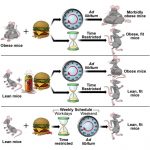Alpha Lipoic Acid
Alpha Lipoic Acid – (other names: thioctic acid, 1,3-diothio-3-pentanoic acid, 6,8-dithio-octanoic acid, and lipoate) is a biofactor found in yeast, spinach and red meat and is an essential co-factor in energy metabolism. A co-factor is a substance, such as a co-enzyme, that must be available in order for another substance, such as an enzyme, to produce a specific result.
Lipoic acid, a thiol, contains sulfur groups in a dithiol ring structure. After reduction by enzymes in the body to its dithiol form known as dihydrolipoic acid (DHLA), which has enhanced antioxidant activity, the source of its extraordinary power as a metabolic antioxidant.
Two general types of antioxidants operate in biological systems: those associated mainly with a lipophilic phase (e.g., membranes or lipoproteins such as vitamin E and ubiquinols) or those which operate in aqueous phase such as ascorbate, glutathione and thioredoxin.
Uniquely, lipoic acid as dihydrolipoate is able to interact with both phases and is a bridge between them.
While new to Americans, lipoic has a long history in Germany of safe use to treat diabetes complications. When present at sufficient concentrations, alpha lipoic acid acts as the anchor of the antioxidant network.
We chose to use alpha lipoic and its reduced form, DHLA, to investigate its action in the redox cycling antioxidant system.
Remarkable results were observed. DHLA readily regenerated vitamin C from its oxidized form in in vitro systems such as suspensions of human Low Density Lipoproteins (LDL), microsomal and mitochondrial membranes, and in tissues such as skin homogenates.
Dihydrolipoate decreased the steady state concentration of the vitamin C semi-ascorbyl radical and spared vitamin C and vitamin E from being lost, indicating that the inter-reacting redox-based antioxidant network system was operating as shown in the following scheme.
Glutathione is a protein which is easily digested, so glutathione levels cannot be effectively increased by oral supplementation. Pharmaceutical companies have long sought glutathione-boosting drugs, without significant success. Thus, we were delighted to find that a-lipoate boosted cellular glutathione levels. Levels of glutathione, the major cellular antioxidant in the body, decline with age. Low glutathione levels are associated with a higher incidence of diseases in the elderly. Glutathione concentrations are recognized as a predictor of susceptibility to disease, and as a marker of biological age.
Among the cells which show large elevations in glutathione after a-lipoate treatment are human erythrocytes, keratinocytes and T-lymphocytes.
Supplementation with a-lipoate substantially increases the glutathione concentrations in tissues. After tissue oxidative injury, drastic losses of glutathione are usually observed. This is largely prevented if a-lipoate is therapeutically administered.
1) Dihydrolipoate is able to directly reduce glutathione disulfide.
This increases levels of reduced glutathione which is the antioxidant and biologically active form required for antioxidant action and for glutathione transferase reactions.
2) Dihydrolipoate reduces cystine to cysteine.
Membrane transport of cysteine into the cells is limited when this amino acid is in its oxidized form (as cystine). When a-lipoate is added to cells, it reduces cystine to cysteine in the extracellular space. The cell membrane transport for the uptake of cysteine is about ten times faster than that of cystine, thus accelerating its uptake and increasing the cell’s ability to synthesize glutathione.
3) Dihydrolipoate reduces oxidized thioredoxin to reduced thioredoxin, a signaling molecule.
Reduced thioredoxin is important in the binding of transcription factors to DNA and thus is necessary for gene expression
 Dihydrolipoate acid recycles the major cell antioxidants – Vitamin C, Vitamin E, Glutathione, Thioredoxin and Ubiquinone |
Lipoate, in its reduced form, DHLA, is the driving force for maintaining high concentrations of the reduced antioxidant (potent) forms of the major cellular antioxidants such as glutathione, thioredoxin and ascorbic acid in the aqueous phase, and vitamin E and ubiquinol in membranes or lipoproteins. The amount of alpha lipoic acid naturally present in the body may not be adequate to obtain the antioxidant benefits. Increasing the amount of alpha lipoic acid through dietary supplementation can help to perform this vital function. All these attributes make alpha lipoic acid the metabolic antioxidant par excellence.
http://www.thailand-guide.com/networkantioxidants/alphalipoic.htm
The Natural Polypill – Alpha Lipoic Acid
A popular story has been floating around the mainstream media about a so-called “polypill”. It’s supposed to be the next “big thing” in treating heart disease. The pill in question combines several heart medications (aspirin, blood pressure medication and cholesterol lowering medication) in one easy to swallow tablet. This combo product isn’t on the market yet, but it will likely be available in the coming years. What you may not have heard on the nightly news is that there’s been some other promising developments in the world of cardiovascular disease management. The reason you probably haven’t seen these reports is because the “medicine” involved is actually a natural supplement that’s been on the market for many years.

The Universal Antioxidant as a “Polypill”
Alpha lipoic acid is a vitamin-like antioxidant that is produced by the body and found in certain foods. One of its primary roles is converting glucose into energy. But this unique antioxidant is involved in many secondary functions as well. Most antioxidants either work in water (vitamin C, grape seed extract, green tea) or fatty tissues (carotenoids, CoQ10, vitamin E). Alpha lipoic acid functions in both. This allows it access to every sort of tissue in the body. Another important trait of lipoic acid is its ability to help regenerate other antioxidants. It therefore allows the antioxidants that are eaten and taken as supplements to work harder and longer in the body.
The most common conditions for which lipoic acid has been used are mostly related to diabetes and liver disorders. Lipoic acid is known to enhance blood sugar control by improving insulin sensitivity. Thanks to its anti-inflammatory effects, it’s also been shown to help with a painful diabetic complication called neuropathy (nerve damage). In addition, its powerful antioxidant properties seem to provide a protective effect in a number of liver diseases.
Recently scientists have been experimenting with the use of alpha lipoic acid in a broader range of conditions. One such example was published in the February issue of the Archives of Biochemistry and Biophysics. Researchers from the Linus Pauling Institute at Oregon State University conducted a trial to evaluate the potential of alpha lipoic acid in lowering high triglycerides (a risk factor for heart disease).
The results of the research were dramatic. A group of rats given therapeutic dosages of lipoic acid exhibited drops in their triglycerides of up to 60%. When the scientists tried to pin down how this reduction occurred, they reached two conclusions:
- The lipoic acid appeared to hasten the clearance of triglycerides from the bloodstream.
- They also noted a decrease in triglyceride production in the liver.
This led the authors of the study to comment that lipoic acid appeared to work differently than conventional (fibrate) medications. They went on to conclude that, “Given its strong safety record, LA may have potential clinical applications for the treatment or prevention of hypertriglyceridemia and diabetic dyslipidemia.”
These results appear to be just the beginning of the story. Here’s a summary of a few other studies on the cardiovascular benefits of alpha lipoic acid:
- A December 2008 study found that lipoic acid could help lower cholesterol and lipid peroxidation, a process that contributes to plaque forming in arteries.
- Another 2008 study published in the British Journal of Pharmacology revealed an improvement in endothelial function in rats fed alpha lipoic acid. The endothelium is a thin layer of cells in our blood vessels that helps blood to circulate properly and, therefore, assists in promoting healthy blood pressure. The authors of this study proclaimed that, “The favorable antioxidant, anti-inflammatory, metabolic and endothelial effects of lipoic acid shown in rodents, in this and other recently published studies, warrant further assessment of its potential role for prevention and treatment of cardiovascular diseases.”
- The prior study lends even more support to an October 2008 review article which highlights alpha lipoic acid as a potential superstar in the management of hypertension (high blood pressure).

I’d also like to point out that toxicity testing on lipoic acid has demonstrated a wide safety margin. The only “side effect” recorded was a drop in body weight for lab animals taking higher dosages. The same cannot be said for the individual components of the “polypill” much less the combination of these medications.
There is one nutritional interaction of which I think you should be aware. Alpha lipoic acid has a chemical structure that is very similar to a nutrient called biotin. Biotin also serves many key functions in our bodies. In order to avoid any interference between the two, it’s probably best to take them at separate times of the day.
In alpha lipoic acid we have a powerful antioxidant that may help to support several markers of cardiovascular health. In doing so it can also provide additional benefits ranging from combating Alzheimer’s disease and inflammation to depression and even protecting ocular (eye) health. I think it’s certainly something worth considering before reaching for any multi-drug tablet.
http://www.healthyfellow.com/193/the-natural-polypill-alpha-lipoic-acid/








